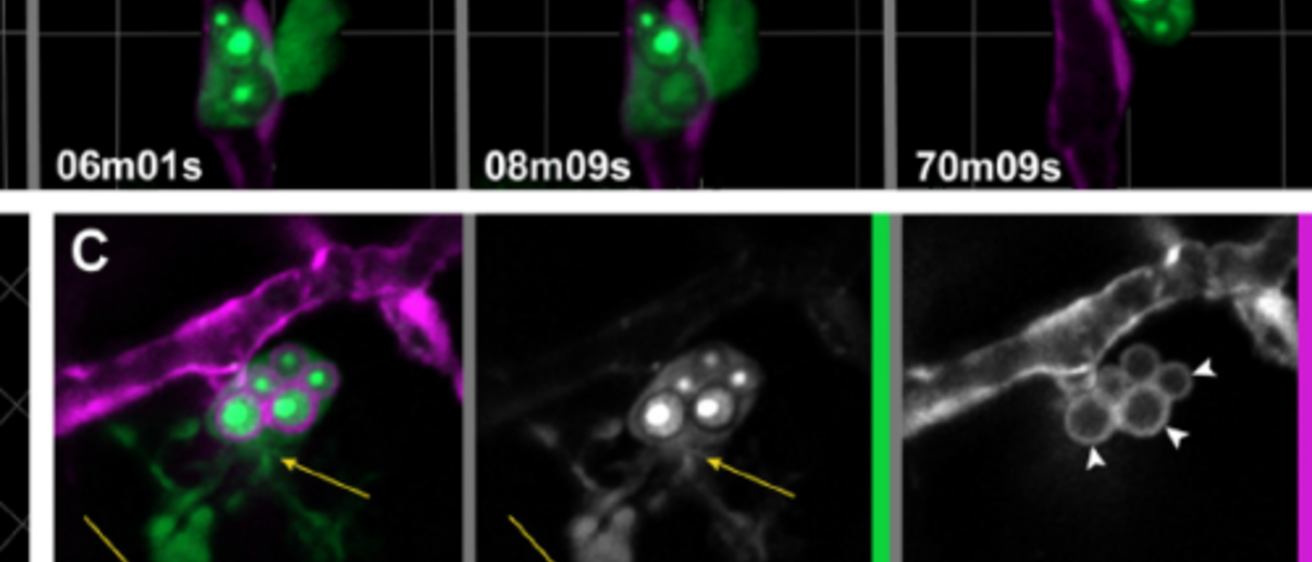Cryptococcal infection begins in the lungs, but yeast cells subsequently
access the bloodstream, from which they can reach the central nervous system (CNS).
The resulting meningoencephalitis is the most common presentation and is very difficult
to treat. How this fungus interacts with the blood-brain barrier (BBB) and establishes
growth in the brain parenchyma remains a central question in fungal pathogenesis. We
and others have developed the zebrafish larva as a model host for cryptococcosis and
demonstrated that hematogenous CNS infection is replicated in this model. Here, we
have used this model to examine the details of BBB crossing and the events immediately
before and after. We have observed multiple mechanisms of BBB crossing and
found that microglia, the resident phagocytes of the brain, likely have multiple roles.
First, microglia either actively transfer yeast cells across the BBB or take up a significant
proportion of them immediately after crossing. Second, microglia are capable of clearing
individual cryptococcal cells at a developmental stage before adaptive immune cells
have emerged. Third, microglia serve to maintain endothelial integrity, preventing other,
phagocyte-independent forms of crossing. These proposed microglial functions during
infection in the zebrafish larva generate new hypotheses concerning the establishment
and control of cryptococcal meningoencephalitis.
Tuesday, January 31, 2023
